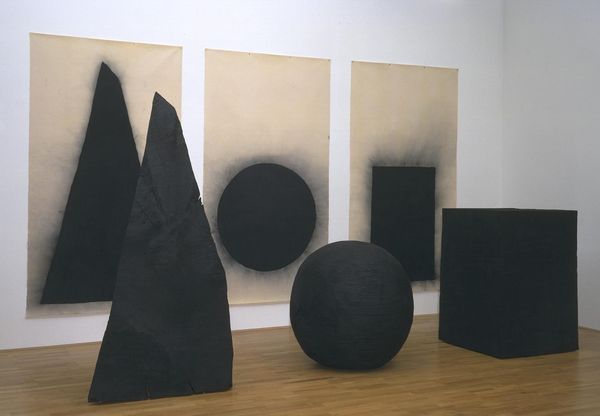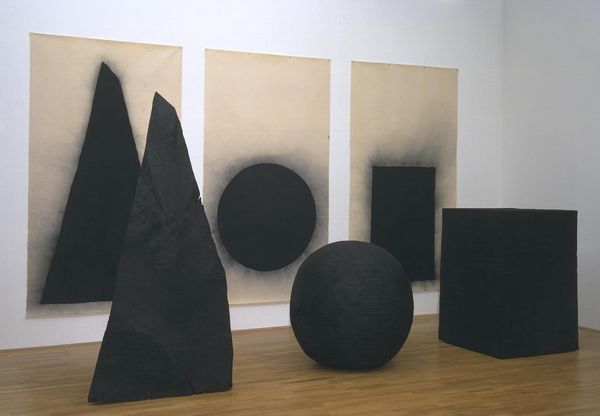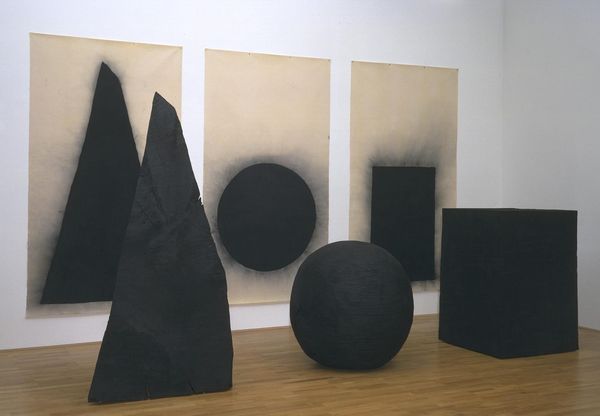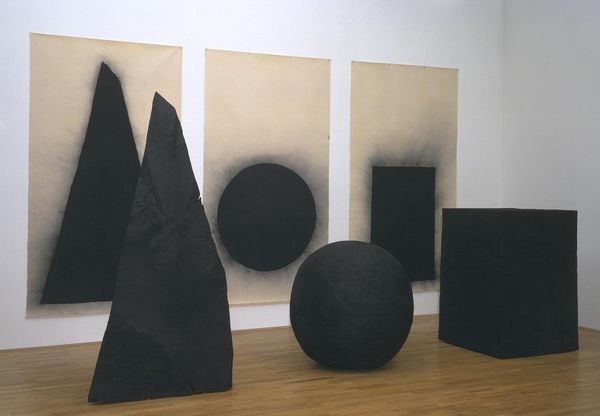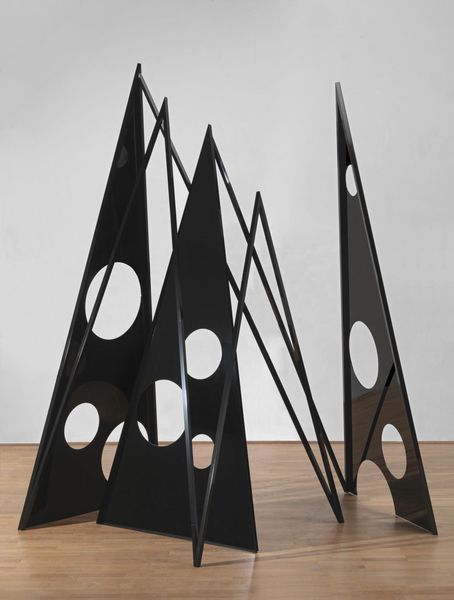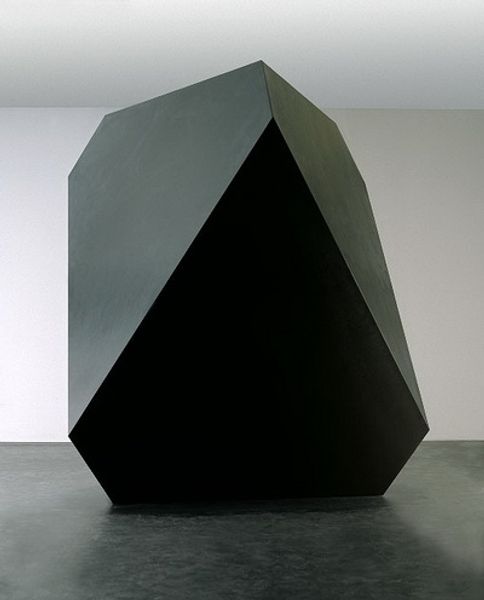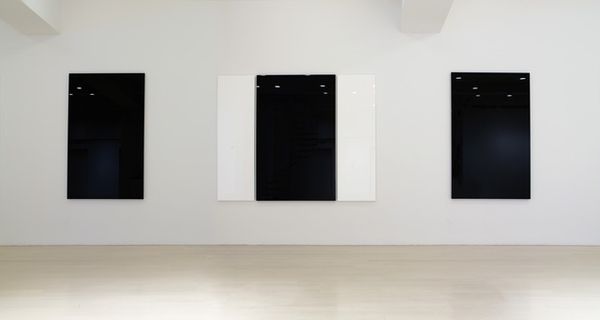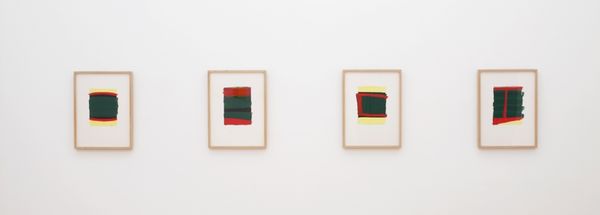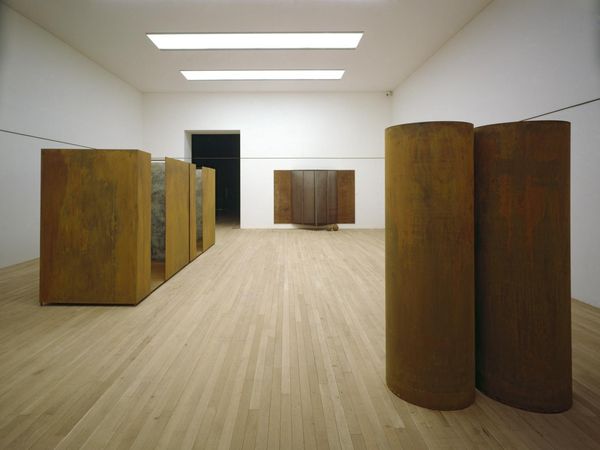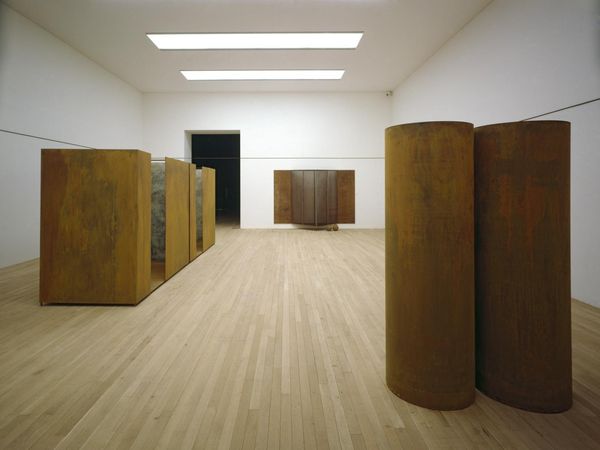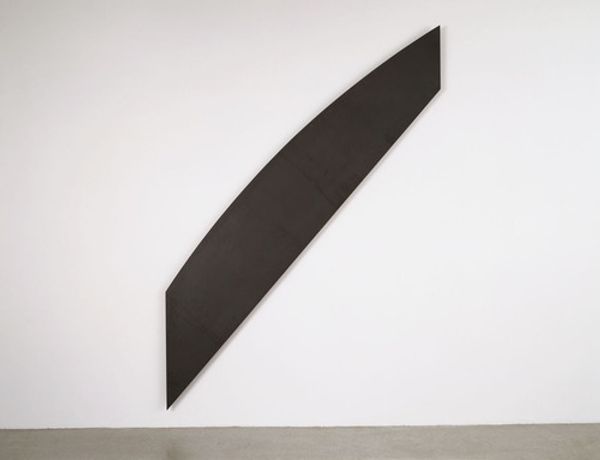
Dimensions: support: 1530 x 2750 mm
Copyright: © David Nash | CC-BY-NC-ND 4.0 DEED, Photo: Tate
Editor: So, this is "Cube" by David Nash from the Tate collection. There's this cool interplay of sculpture and drawing using basic shapes and strong black. It feels very elemental, almost like a stage set. What do you make of it? Curator: Nash presents a dialogue, doesn't he? Between the platonic ideal of form and the rough, imperfect reality of material. It's like a conversation between the mind and the earth. Do you feel the pull between the precision of geometry and the hand-hewn quality of the wood? Editor: Totally! It's like he's teasing us about perfection. The shadows in the back really reinforce that. Curator: Yes! And perhaps hinting that true beauty lies in that tension, in the subtle dance between what we imagine and what we create.
Comments
Join the conversation
Join millions of artists and users on Artera today and experience the ultimate creative platform.
tate 6 months ago
⋮
Cube is a large charcoal drawing on canvas by the British artist David Nash featuring a dense black form that represents a cube. Although the work’s title refers to this shape, its vertical sides are not straight like those of a conventional cube, but take on organic lines in which irregularities are visible. Surrounding the cube is a border of smudged charcoal that emanates from the shape’s otherwise clearly defined edges. Cube is one of six elements that make up Nash’s installation Pyramid, Sphere, Cube 1997–8, which consists of two further charcoal drawings – Pyramid (Tate T07542) and Sphere (Tate T07543) – along with three wooden sculptures with charred black surfaces that take the form of a pyramid, a sphere and a cube and are the same scale as the shapes depicted in the drawings (see Pyramid, Tate T07539, Sphere, Tate T07540, and Cube, Tate T07541). The three drawings are displayed in a row on the gallery wall, with each appearing alongside its corresponding three-dimensional shape, which rests on the gallery floor in front of it. Although the spacing between the six elements of the installation depends on the dimensions of the room in which they are displayed, the drawings are usually positioned so that their lower edges are approximately 35 cm from the floor, and the spaces between the drawings can range between 5 cm and 30 cm, with the sculptures being centred on their corresponding drawing.
